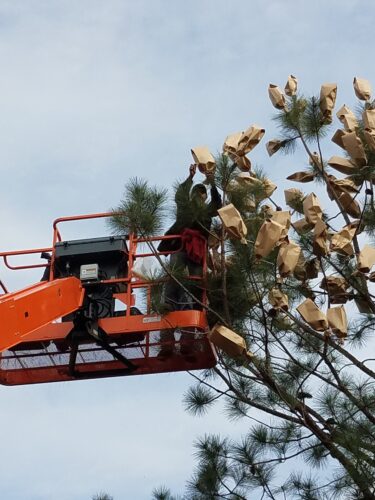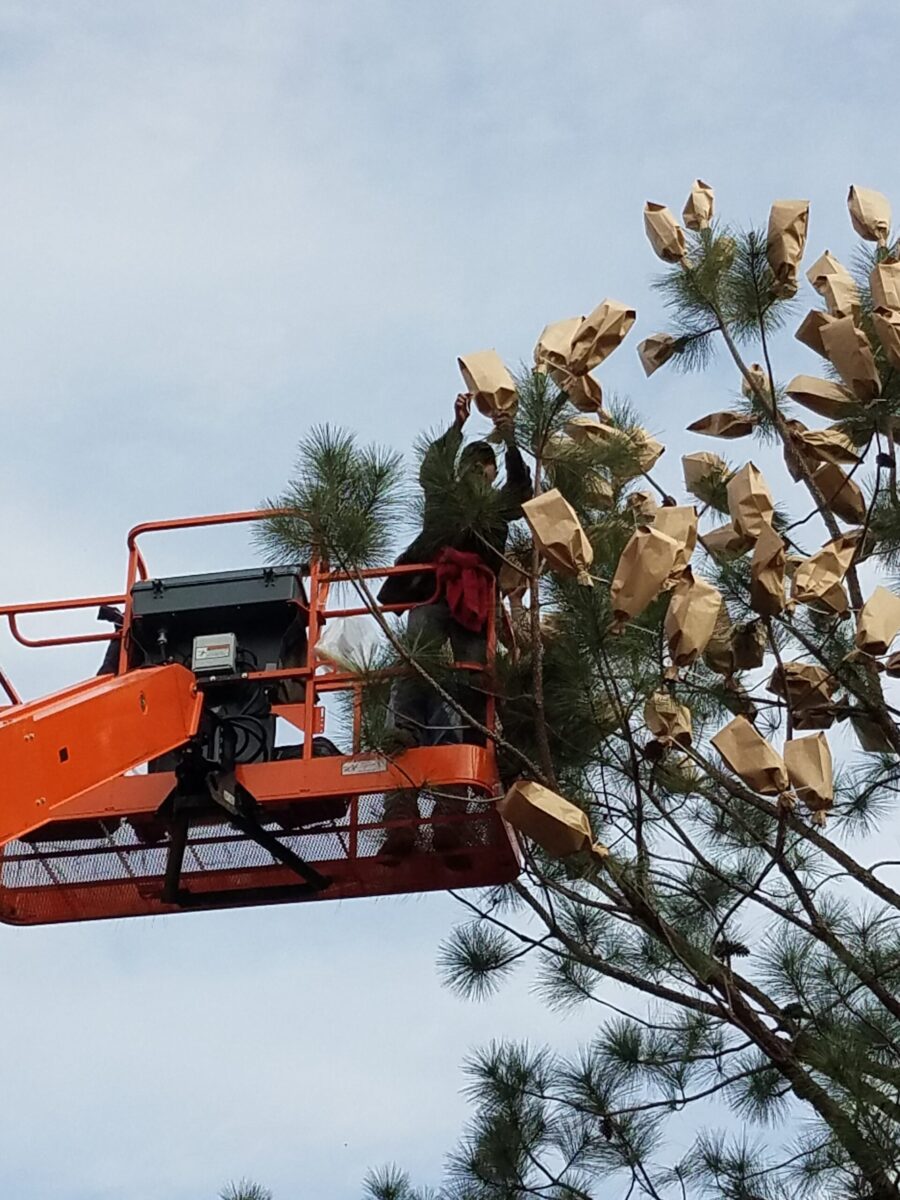Field Notes: A Sure Sign of Spring!
March 15, 2018 11:32 am

by DOF Senior Area Forester Scott Bachman
It is not quite spring, but the signs of spring are abundant at the New Kent Forestry Center. The photo below shows one of the first signs of spring.

The loblolly pine trees appear to have grown paper bags on their tips! These contractors are placing bags on the trees to protect the soon-to-be receptive pine flowers (Strobli) from wind-blown pollen. That brings up an obvious question, why?
These trees are destined to be used for control pollination seed production. Control pollinated trees are some of the most highly desired tree seedlings that the DOF produces. They are desirable because the parentage of the seedlings is known. These trees are like fine race horses, a flower from a fast growing tree is crossed with pollen from another fast growing tree. The bags are essential to this process.
“In nature, loblolly pine trees typically are pollinated at random with the possibility of self-pollination, though rare, because of the way pollen and flowers are disposed on the tree,” explains DOF Tree Improvement Forester, Onesphore Bitoki.

“In general most of the flowers are in the top part of the tree crown while most of the pollen is at the bottom of the tree crown on the same tree.”
Loblolly pine trees in the forest are pollinated by the wind. Another sure sign of spring is finding your car covered in a fine yellow/green dust — loblolly pollen! The tree improvement staff can use this to their advantage. They can cover the flowers in a seed orchard tree with a bag and then inject pollen into the bag from a known fast-growing tree. The resulting seed produced in the cone will have the high quality genetics of the two parent trees.
The covering of the branch tips is just the first step on a long process. After the pollen season is over, the bags are removed from the tree and the cones marked. Not all cones on a tree are “bagged” so each tip that was control pollinated must be tracked for 18 months before it is picked. Pollinated cones will grow and develop seeds over the next two summers. These high value cones, as well as our other orchard trees, are also managed to control insects that would like to eat the growing seed in the cones.
When the cones are finally mature they are harvested in Fall, typically in October, using high lifts or bucket trucks making sure the marked cones are kept separate from wind pollinated cones. Each cone is hand-picked and placed into marked containers identifying their “parents.” This “name” will stay with each cone as it is dried and the seed removed, prepared for planting, planted, harvested at the nursery, packaged and ultimately sold to a landowner. Like a fine race horse, this new fast growing pine stand can trace a pedigree back to these paper bags in the New Kent Forestry Center.
Tags: Genetics, Loblolly Pine
